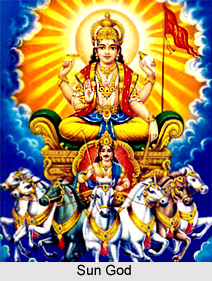 Rajput clan belongs to three lineages. Suryavanshi lineage claims to be descent of Sun God. Chandravanshi lineage asserts to be descent of moon. Yaduvanshi and Puruvanshi are major sub clans of Chandravanshi. Agnivanshi claims descent from Fire. Each of these lineages is divided into several clans all of whom claim direct patrilineage. Each of Rajput clan has its individual genealogical creed, describing the vital peculiarities, religious beliefs, and original residence of the clan. In the Kumarapala Charita of Jayasimha and the epic poem Prithviraj Raso of Chand Bardai one can find the thirty six Rajput clans listed.
Rajput clan belongs to three lineages. Suryavanshi lineage claims to be descent of Sun God. Chandravanshi lineage asserts to be descent of moon. Yaduvanshi and Puruvanshi are major sub clans of Chandravanshi. Agnivanshi claims descent from Fire. Each of these lineages is divided into several clans all of whom claim direct patrilineage. Each of Rajput clan has its individual genealogical creed, describing the vital peculiarities, religious beliefs, and original residence of the clan. In the Kumarapala Charita of Jayasimha and the epic poem Prithviraj Raso of Chand Bardai one can find the thirty six Rajput clans listed.
The thirty six royal Rajput clans are Ahirs, Agnipala, Bargujar, Balla, Bhati, Byce, Chauhan, Chawur, Dahima, Dahiya, Doda, Gahlot, Gherwal, Gora, Hun, Jaitwar, Jhala, Jat, Johiya, Kachwaha, Kirar, Mohil, Nicumpa, Pala, Paramara, Pratiha, Rathore, Solanki, Sarwya, Sengar, Sikarwar, Silar, Sisodia, Taank, Tomara and Yadavs.
Suryavanshi or the sun dynasty is the oldest among Kshatriyas. The major Suryvanshi clans are described below.
Bais Rajputs
The Bais Rajputs are a powerful Rajput clan consisting of the rich, entrepreneurs, warriors, and land owners. They claim descent from Lakshmana, brother of Lord Rama. They have earned their reputation through their kings and landowners that ruled over northern India for and held vast tracts of land for the clan. Oudh, Sialkot, and Lucknow were the large states of Bais.
Gaur Rajputs
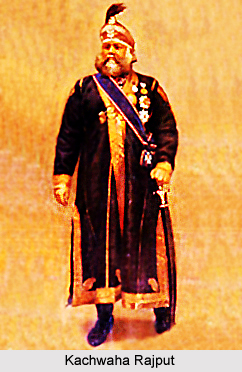 The Gaur Rajputs is basically the descendants of the Rajput Pala dynasty which once used to rule ancient Bengal. Some old texts of the British rule refer to the Pala Rajputs as Gour or Gaur Rajputs. The Gaur Rajputs had dispersed to various parts of Northern and Central India. Most of the Gaur clan is spread across the central India, Madhya Pradesh, Uttar Pradesh and Rajasthan. This clan was known as the greatest riders and fighters.
The Gaur Rajputs is basically the descendants of the Rajput Pala dynasty which once used to rule ancient Bengal. Some old texts of the British rule refer to the Pala Rajputs as Gour or Gaur Rajputs. The Gaur Rajputs had dispersed to various parts of Northern and Central India. Most of the Gaur clan is spread across the central India, Madhya Pradesh, Uttar Pradesh and Rajasthan. This clan was known as the greatest riders and fighters.
Kachwaha
The Kachwahas are a Suryavanshi Rajput clan who ruled states such as Dhundhar, Alwar, and Maihar, and Amber. The Maharaja of Jaipur is regarded as the head of the extended Kachwaha clan. There are approximately 71 subclans of the Kachwaha, including the Rajawat, Shekhawat and many more. They claim descent from Kusha, the younger of the twin sons of Lord Rama.
Minhas
Minhas Rajputs claim descent from Rama a legendary king of a href="https://www.indianetzone.com/ayodhya" class="clsCrossLink" title="Ayodhya">Ayodhya who trace their ancestry to the Ikshvaku dynasty of Northern India. Minhas Rajputs are spread throughout Punjab, Himachal Pradesh and Jammu & Kashmir Region in India.
Naru
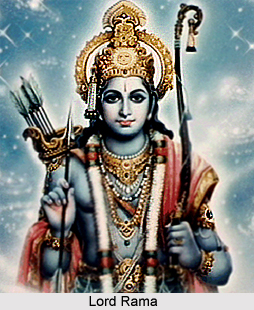 The Narus of Hoshiarpur District assert that their ancestor was a Suryavanshi Rajput of Muttra, named Nipal Chand, and descended from Raja Ram Chand. During the rule of Mahmud of Ghazni he was converted and took the name of Naru Shah. Basically they are surajbansi Rajputs. Historically they are from Rajasthan and many of them now living in Punjab. They are now mostly Muslims.
The Narus of Hoshiarpur District assert that their ancestor was a Suryavanshi Rajput of Muttra, named Nipal Chand, and descended from Raja Ram Chand. During the rule of Mahmud of Ghazni he was converted and took the name of Naru Shah. Basically they are surajbansi Rajputs. Historically they are from Rajasthan and many of them now living in Punjab. They are now mostly Muslims.
Rathore
The Rathore clan originally descended from the Gahadvala Dynasty in Kannauj in Uttar Pradesh. The Maharaja of Jodhpur is regarded as the head of the extended Rathore clan of Hindu Rajputs. The Rathore clan had 24 branches
Sisodia
The Sisodias are Suryavanshi Rajputs aver descent from Lord Rama through his son Lava. They were known as the Ranas of Mewar, which was a princely state under the British Rule. They trace their descent from Bappa Rawal, ruler of the Guhilot Dynasty.
The seat of the Sisodia kingdom, Chittorgarh fort was the site of the three most famous Jauhars recorded in history. The acts of Jauhar and Sati have become an important part of Rajput culture and philosophy
The Chandravanshi, or Moon Dynasty of the Rajputs claim descent from Moon. This dynasty is ancient, but younger than the Sun Dynasty. Som was the first king of this dynasty. Other important kings were Pururawa, Nahush, Yayati, and so on. The Yaduvanshi lineage, branch of Chandravanshi claim descent from the Hindu god Krishna and from Yadu, eldest son of Yayati. Foremost clans of this dynasty are mentioned below.
Bhati
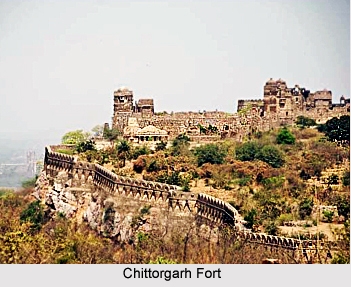 Bhati Rajputs are a Chandravanshi Rajput clan from the Jaisalmer region of western Rajasthan. Their enemies were the powerful Rathore clans of Jodhpur and Bikaner. They used to fight battles for the possession of forts, cattle and waterholes. They were proficient horse riders, marksman and warriors. Their empire extended to the Punjab, Sindh and beyond to Afghanistan.
Bhati Rajputs are a Chandravanshi Rajput clan from the Jaisalmer region of western Rajasthan. Their enemies were the powerful Rathore clans of Jodhpur and Bikaner. They used to fight battles for the possession of forts, cattle and waterholes. They were proficient horse riders, marksman and warriors. Their empire extended to the Punjab, Sindh and beyond to Afghanistan.
Chandelas
In the early tenth century, the Chandelas ruled the fortress-city of Kalinjar. They are a clan found in Rajasthan, Haryana and Uttar Pradesh. The roots of Chandela Rajput can be traced to Sapai, which was popularly known as Samapada Nagar. The title given to them was Rao. They are the only hereditary title holders of Kanpur district.
Jadeja
Jadeja is the name of a major clan of Yadav. They ruled huge parts of Kathiawar peninsula and Kutch. Jamnagar, Dhrol, Gondal, Rajkot, Morabi was ruled by Jadejas since 450 years above.
Katoch
The Katoch clan is deemed to be one of the oldest surviving clan in the world. They are first mentioned in the Hindu epic The Mahabharata. They ruled several princely states in the region. The originator of the clan was Rajanaka Bhumi Chand. The ruler Rajanaka Bhumi Chand Katoch founded the Jwalaji Temple (now in Himachal Pradesh).
Saharan
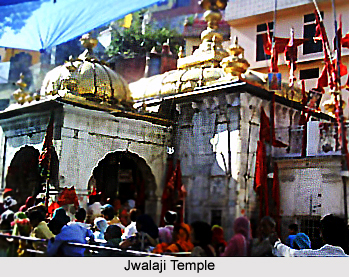 Saharan is an ancient Chandravanshi Kshatriya Rajput. They use titles such as Shah, Rana, Chaudhary and Malik. Some claim descent from Yaduvanshi king Maharaja Gaj of Ghazni. Some Saharans in India and Pakistan claim from Kshatriya Rajputs and their lineage go to Lord Rama. Some Saharan come from Bhatti Rajput. Some come from Raja Saharan of Thanesar who embraced Islam. Some Saharans come from Nagavanshi Rajput linages which also go back to Lord Rama.
Saharan is an ancient Chandravanshi Kshatriya Rajput. They use titles such as Shah, Rana, Chaudhary and Malik. Some claim descent from Yaduvanshi king Maharaja Gaj of Ghazni. Some Saharans in India and Pakistan claim from Kshatriya Rajputs and their lineage go to Lord Rama. Some Saharan come from Bhatti Rajput. Some come from Raja Saharan of Thanesar who embraced Islam. Some Saharans come from Nagavanshi Rajput linages which also go back to Lord Rama.
Som
Somvanshi are Chandravanshi Rajputs, and descended from Mahabharata. They are direct descendants of Moon. King Dushyant, his son Bharata, all Pandavas and Kauravas were Somvanshis. Majority of Somvanshis live in Meerut, Pratapgarh, Muzaffarnagar and Hardoi districts of Uttar Pradesh.
Tomaras
Tomaras descended from Mahabharat`s great hero, Arjuna, through his son Abhimanyu, and grandson, Parikshat. Jagas are a caste in Rajasthan who are hereditary keepers of genealogical records of Rajputs, and present `Jagas` of Tomar Rajputs reside near Jaipur, Rajasthan.
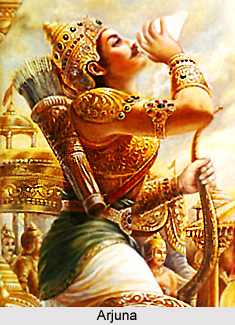 Agnivanshi deems to be descents from God of Fire. Four main Rajput clans are considered to be Agnivanshi. Chauhans, Paramara, Solanki and Pratiharas are considered to be Agnivanshis.
Agnivanshi deems to be descents from God of Fire. Four main Rajput clans are considered to be Agnivanshi. Chauhans, Paramara, Solanki and Pratiharas are considered to be Agnivanshis.
Chauhans
Chauhans originated as feudatories of the Pratiharas and rose to power in the wake of the decline of that power. Their state was initially centered around Sambhar in present-day Rajasthan. Their most famous ruler was Prithviraj Chauhan, who won the First Battle of Tarain against an invading Muslim army but lost the Second Battle of Tarain the following year. This loss ushered in Muslim rule in India.
Mori
Mori clan is one of the 36 royal clans of Rajputs. They are sub clans of Parmara Rajputs. They ruled Chittor and Malwa till early part of eighth century and built the biggest fort in India at Chittor. They remained as smaller royal states and jagirdars in the central India in present state of Madhya Pradesh, settled in Dhar, Ujjain, Indore, and Bhopal and so on.
Naga
The Naga were one of the ancient most kshatriya tribes of India who evolved from Suryavansha and ruled large parts of the country at different times. However, the Nagas near Kashmir seems to be the original abode of all of them. The worshipers of Naga were supposedly known as Nagil. The trace of Nagvanshi can be found out in Chotanagpur, presently in Jharkhand.
Paramaras
Paramaras are Agnivanshi Rajputs and were near-neighbours of the Solankis. They originated as feudatories of the Rashtrakutas who ruled Malwa and the area at the border between present-day Gujarat and Rajasthan. Bhoja, king of Malwa, belonged to this dynasty.
Solankis
Solankis are an Agnivanshi group descended from the Chalukyas of Karnataka. They ruled western and Central India. The Solanki clan name is found within the Rajput and Gurjar community of Rajasthan and Uttar Pradesh. They declined in the 13th century and were dislodged by the Vaghela Dynasty.
The thirty six main clans are also subdivided to create the complex clan system of Rajputs. No matter whatever clan Rajputs belonged to, spirit of bravery and patriotism and chivalry was a common trait. They enjoy reputation as soldiers. The principle of patrilineage is staunchly adhered to in determining one`s place in the system and a strong consciousness of clan and lineage is an essential part of the Rajput character.



















